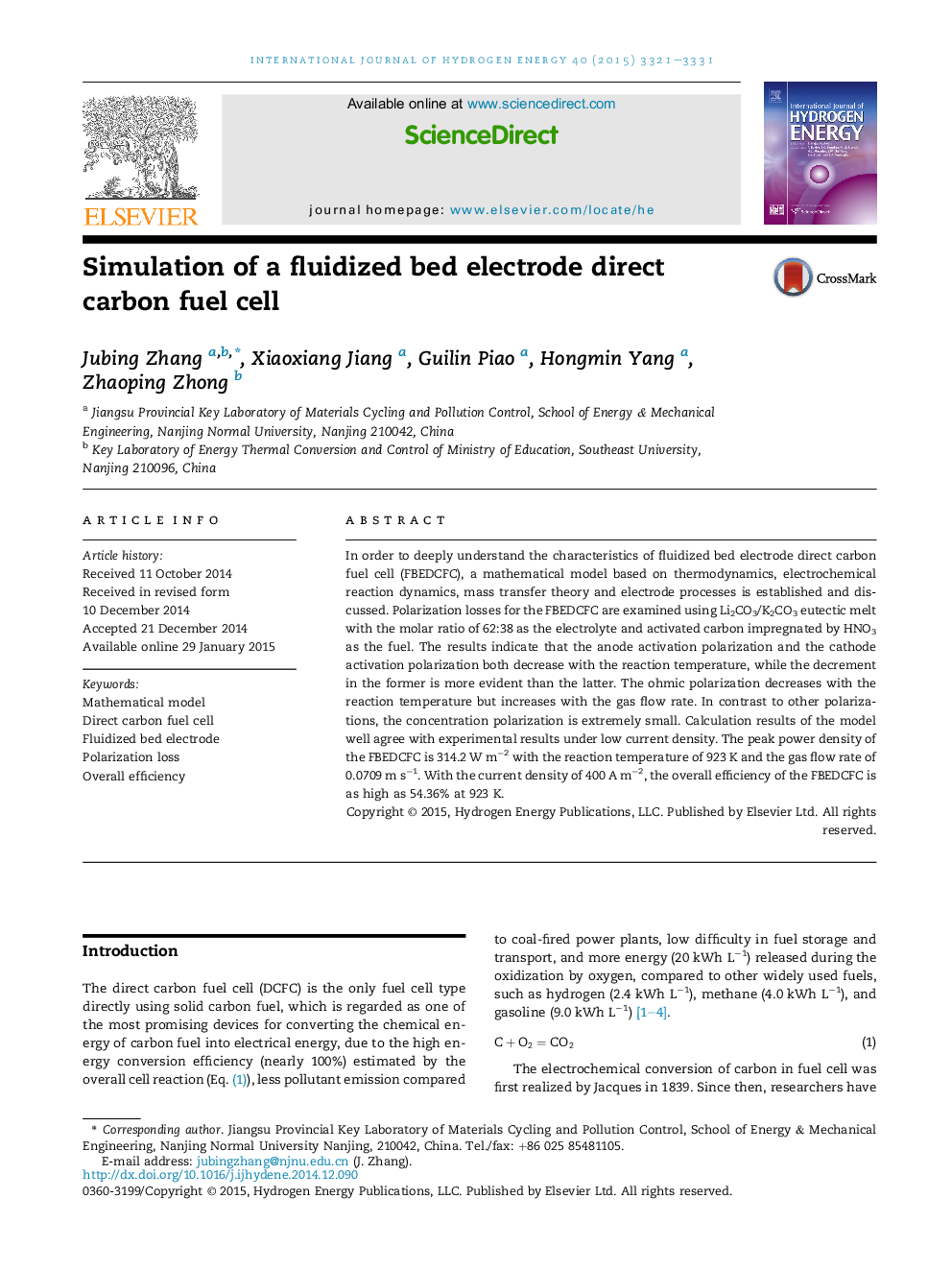| Article ID | Journal | Published Year | Pages | File Type |
|---|---|---|---|---|
| 1272028 | International Journal of Hydrogen Energy | 2015 | 11 Pages |
•The fluidized bed electrode is applied to a direct carbon fuel cell.•A mathematical model for fluidized bed electrode direct carbon fuel cell (FBEDCFC) is established and solved.•The concentration polarization of the FBEDCFC is proved to be negligible.•The simulation is verified and perfected by experimental results.
In order to deeply understand the characteristics of fluidized bed electrode direct carbon fuel cell (FBEDCFC), a mathematical model based on thermodynamics, electrochemical reaction dynamics, mass transfer theory and electrode processes is established and discussed. Polarization losses for the FBEDCFC are examined using Li2CO3/K2CO3 eutectic melt with the molar ratio of 62:38 as the electrolyte and activated carbon impregnated by HNO3 as the fuel. The results indicate that the anode activation polarization and the cathode activation polarization both decrease with the reaction temperature, while the decrement in the former is more evident than the latter. The ohmic polarization decreases with the reaction temperature but increases with the gas flow rate. In contrast to other polarizations, the concentration polarization is extremely small. Calculation results of the model well agree with experimental results under low current density. The peak power density of the FBEDCFC is 314.2 W m−2 with the reaction temperature of 923 K and the gas flow rate of 0.0709 m s−1. With the current density of 400 A m−2, the overall efficiency of the FBEDCFC is as high as 54.36% at 923 K.
